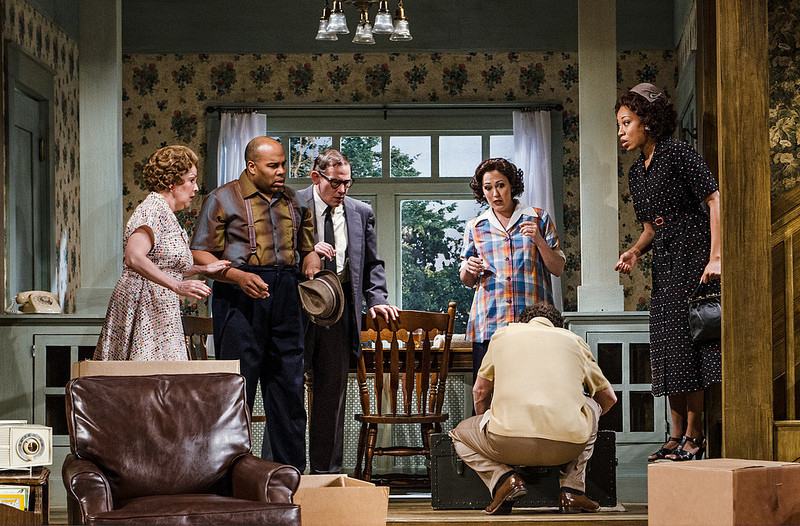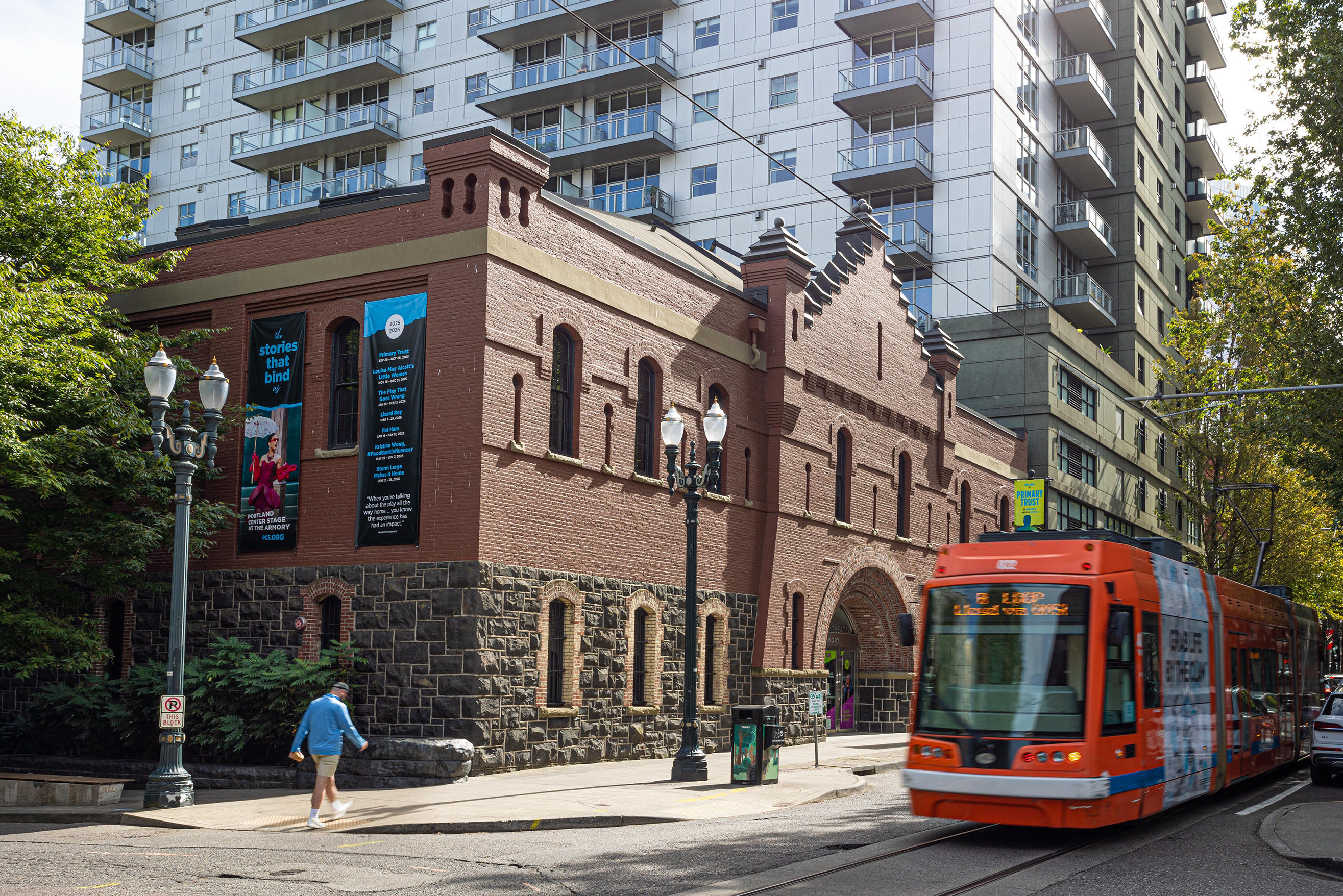Review: PCS’s ‘Clybourne Park’

Sharonlee McLean, Kevin R. Free, Gavin Hoffman, Kelley Curran, Sal Viscuso and Brianna Horne in Clybourne Park.
Image: Patrick Weishampel
The story opens on a 1950s couple packing to move to the suburbs from their home in the mostly German and Irish neighborhood of Clybourne Park. When a neighbor tries to talk them out of selling by revealing that the buyers are an African American family—the very family in Lorraine Hansberry’s groundbreaking 1959 play A Raisin in the Sun—prejudices and tempers flare, pulling the community priest, the African American maid, and her husband into a cavalcade of increasingly hilarious discomfort.
Act two, set in contemporary times, sees the neighborhood on the brink of another transition. A young white couple has just bought the house and is confronted by an African American couple from the neighborhood association who wants to stress the importance of honoring the history of what has been a black neighborhood since the white flight of the ‘50s and ‘60s. Of course, tempers and prejudices flare, pulling both sides and their lawyers into a deliciously discomfiting and hilarious escalation of racist jokes.
Norris’s script is so smart, nimble, and ferociously funny that it’s easy to see why it won a Pulitzer, a Tony, and an Olivier (London's Tony). As in his play The Pain and the Itch, which Third Rail Rep mounted in 2011, dialogue unfolds like a war: multiple skirmishes take place at once, as characters’ overlapping conversations collide and align in the most amusing and often illustrative ways. And beautifully mirrored parallels in both acts work to emphasize the continuity of history while also dismantling its stereotypes, from the persisting obsession over five-minute commutes (although the place of work has changed) to the role of skiing, that powdered pinnacle of privilege, which switches from being used in the first act by the racist neighbor to illustrate that whites and blacks just live differently—“skiing doesn’t appeal to negroes”—to being an activity in the second act that now only appeals to the African American characters.
Clybourne Park
Portland Center Stage
Gerding Theater at the Armory
Apr 6–May 5Portland Center Stage outdoes itself with a production that is shining Broadway-excellence across the board (if Sweeney Todd hadn’t been so devilishly good, I’d have no qualms saying this is the best big production of the season). Chris Coleman’s direction is as sharp as the dialogue, moving characters through what amounts to two extended single scenes with economy and zest while using stylized blocking details to capture the spirits of the times (the stretching by the female lawyer at the start of act two elicited particular guffaws). Without exception, the ensemble cast of locals and visiting artists—Kelley Curran, Kevin Free, Andy Lee-Hillstrom, Gavin Hoffman, Brianna Horne, Sharonlee Mclean, and Sal Viscuso—is fantastic. Curran’s portrayal of a deaf woman in the first act (another drop in the cascade of provocative choices by Norris) was so genuine that one audience member who works with deaf students said during the talk back that she believed Curran was a deaf actor.
Of course, the house itself is the silent central character, and scenic designer Michael Olich does a magnificent job of transforming it during intermission from a sparkling ‘50s home to a battered, abandoned abode (read our story about how he creates the change).
Clybourne Park is a story that could be set in North and Northeast Portland with little more than a change of name, and it flays Portland liberalism accordingly. The white characters in act two are veritable stand-ins for many of the young, white homebuyers who swept through Alberta, Mississippi, and the city’s other African American neighborhoods, ultimately resulting in the displacement of 10,000 African American residents. Echoing conversations you might hear any day of the week at the Mississippi food cart pod, the white husband and wife talk and talk, going on ad nauseam about how the system dehumanizes and abandons African Americans, but then seem completely (and rather willfully) blind to their own participation in the process. After all, they love the neighborhood now—once they stopped seeing it as it "used to be" and overlook the floundering schools—and they’re only talking about one house.
But the play isn’t a guilt trip—at least, not exclusively. By lacing conflict through the married couples as well as between them, it allows us to step together into that scary area that most of us are squeamish to discuss, and to engage in that conversation that is, consequently, direly needed in this whitest-of-all major American city. And most importantly, Clybourne Park injects the existential and very un-PC humor that’s embedded in the angst of these conversations to show that, perhaps if we stop pussyfooting around, we might actually get somewhere. Or as one character puts it, “Maybe we should all learn what the other eats.”




